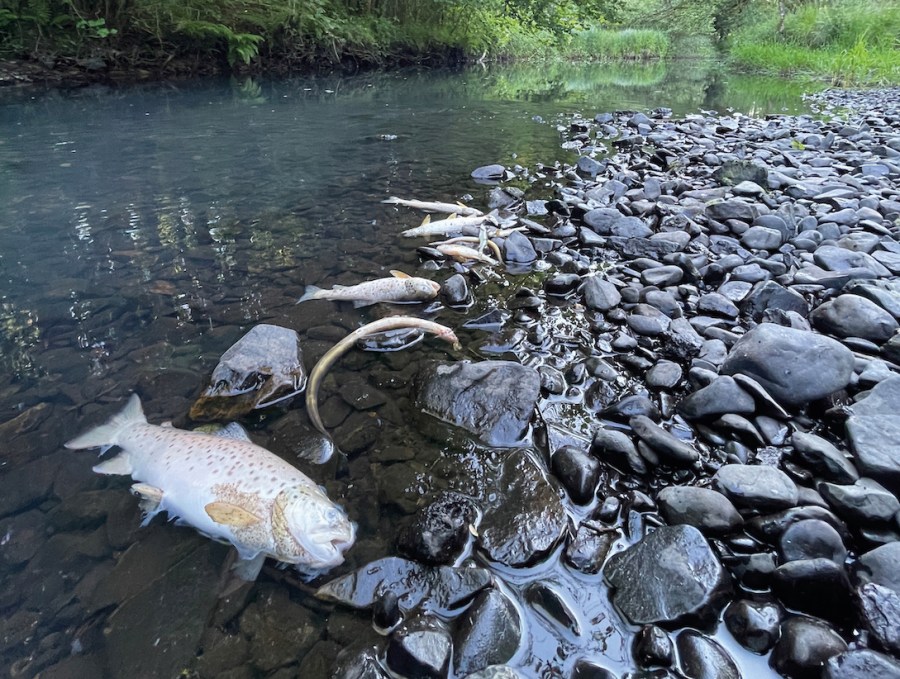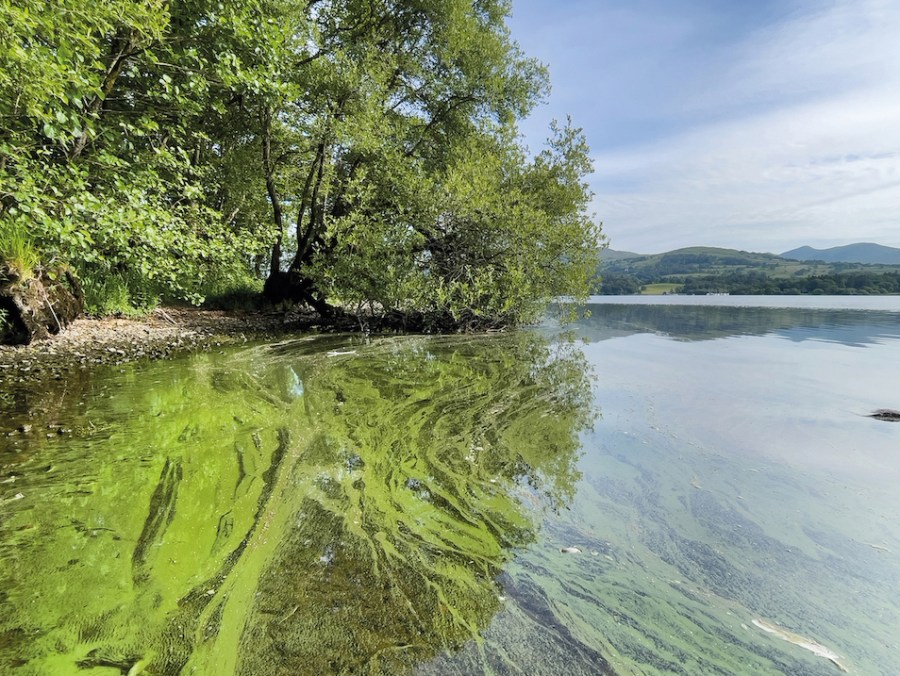Conservationist Matt Staniek is leading a campaign to stop sewage being discharged into England’s largest lake. He explains why it’s happening – and what can stop it.
Main image: algal bloom in Windermere. Photo: Matt Staniek
Windermere is suffering from the same sickness that many of our nation’s rivers are facing: sewage. You may be asking yourself “Is sewage really discharged into England’s largest lake? In a national park? In an Area of Outstanding Natural Beauty and a World Heritage Site?”
I can guarantee to you that it is – for thousands of hours. It is for this exact reason that I began my campaign almost a year ago. I could not believe that within the national park, which is named after water itself, such archaic practices were still happening right under our noses and right where we swim.
I simply could not sit by as wildlife was fading from our rivers, in front of my eyes. So, apart from the faecal bacteria that comes from sewage, why else is this discharge an issue? It comes down to the nutrient phosphorus.
Phosphorus is an excellent fertiliser, so much so that we mine it abroad and
bring it over to spread on our fields. Within aquatic environments, however, phosphorus causes algae to grow. When there is lots of phosphorus (say via sewage spills due to too much pressure on inadequate infrastructure), then there is lots of algae.
Algae produces a lot of oxygen in the daytime, but at night it also sucks up a lot of it. And when it dies in large quantities and drops to the bottom of the lake, it starts to decompose, which also takes up a lot of oxygen; so lots of algae means low levels of oxygen in the water, which in turn kills fish.
When a body of water has excessive nutrients within it, it is classed as ‘eutrophic’ – and this is exactly the situation that we are seeing in Windermere. Salmon, sea trout and even the Arctic charr, which has persisted in the lake since the Last Glacial Maximum, are all in decline – with the fear that the charr are already extinct in the south basin of the lake.
⛔️ WINDERMERE LAKE IS DYING ⛔️
Blue green algal bloom could be toxic to both you and your pets. STAY OUT of Windermere.
This is going to get worse as SEWAGE still discharges for over 5000+ hours year on year, ALL going into Windermere.
SIGN AND RT ⬇️https://t.co/MnscAi4v3M pic.twitter.com/6O3l7ofPtI
— MattStaniek (@MattStaniek) August 13, 2022
And this is just phosphorus. There are many more issues with sewage. Recently, I observed on Cunsey Beck (one of the main tributaries that runs into Windermere, and a Site of Special Scientific Interest – SSSI) significant fish die-off due to a pollution event, with early results from South Cumbria Rivers Trust pointing to discharge from a wastewater treatment pipe.
In this event, ammonia levels from the sewage were incredibly high. It was also dispelled into a river in the middle of a drought (when water temperatures were warm), which will likely have led to more non-ionised ammonia within this system, which in high enough quantities becomes toxic to life – killing the river.
But what can we do? There are, of course, mitigations that we can all make that will reduce our impact on our freshwater environment. Because of our antiquated wastewater systems, everything that we do flush eventually ends up in our lakes and rivers – the same lakes and rivers from which we then extract our drinking water. Using environmentally sound washing-up liquids and detergents is one easy way for us to reduce our impact.
You can also sign my petition, ‘Save Windermere from sewage and an environmental catastrophe’. Read the solution that I am demanding the government to implement, and sign if you want to see Windermere saved for our future generations.

Dead fish in Cunsey Beck. Photo: Matt Staniek
But, for Windermere, it cannot be down to us changing our habits alone. We need investment into infrastructure that we should have seen 30 years ago. What is currently in place lacks the capacity to deal with the enormous burden that millions of visitors to the Lakes has on these systems. The spilling of sewage for thousands of hours reflects this. Did we have over 5000 hours of storm events in 2021 to justify discharging raw sewage into the country’s most iconic body of water? I certainly do not think so.
The government is not doing, and has not done, enough to ensure the protection of our freshwater, particularly in the face of climate change. There is no target for zero spills within the Lake District National Park, nor is there any plan to bring in legislation to give the Environment Agency the powers to be able to monitor, regulate and enforce upgrades to privately owned septic tanks,
of which there are over 1500 within the Windermere catchment alone.
We are running out of time to save this lake, and our nation’s water. If this is the situation with Windermere, what exactly is happening to your local river?







